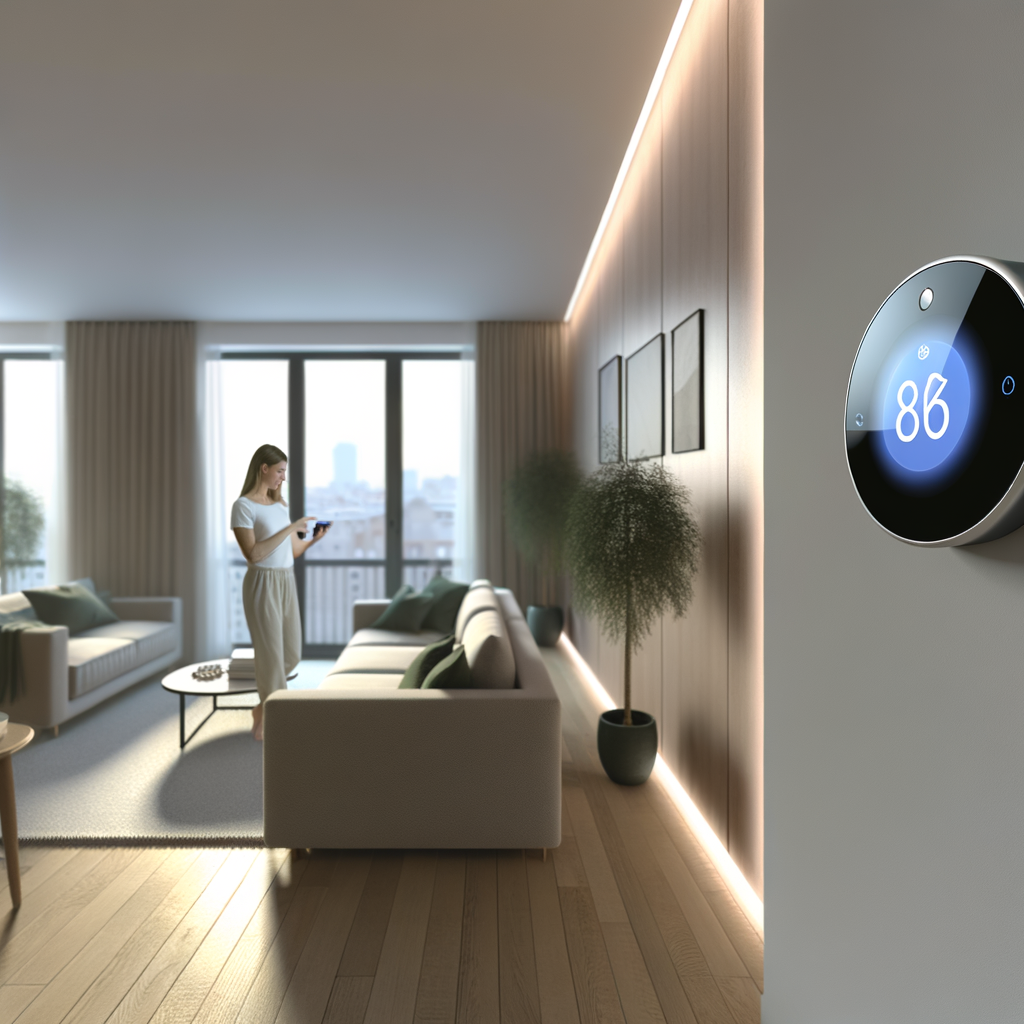Myth-Busting Smart Thermostats: What Renters Need to Know Before They Buy
Smart thermostats are everywhere in today’s tech-forward homes. They claim to save money, lower energy use, and make climate control effortless. But if you rent an apartment, condo, or house, you’re probably asking: Does the hype match the reality? Will a smart thermostat work for your rental, too?
Let’s debunk the common myths around smart thermostats, zero in on the practical considerations renters face, and give you the tips and product recommendations you need to make the smartest buy possible.
Understanding Smart Thermostats: The Basics
Before we dive into myth-busting, it’s important to clarify what a smart thermostat actually is.
- Wi-Fi Connectivity: They connect to your home’s Wi-Fi, allowing remote control via smartphone, tablet, or computer.
- Learning Capabilities: Many models adapt to your schedule, learning when you come and go to optimize heating and cooling.
- Energy reports and automation: They provide feedback and automate settings for efficiency and comfort.
These features can save energy—and money—but some misconceptions prevent renters from taking advantage. Let’s start myth-busting!
Top Smart Thermostat Myths—Debunked for Renters
Myth #1: Smart Thermostats Require Professional Installation
Reality: Many smart thermostats, especially newer models, are designed for easy DIY installation. But rental properties present unique installation challenges.
- Check your lease first: Altering thermostats may violate lease terms.
- Investigate compatibility: Some apartments use non-standard or centralized systems.
- Look for non-wired models: Some smart thermostats require a C-wire (common wire); many rentals don’t have this pre-installed.
Actionable tip: Always get landlord approval before making any changes to wired systems. If a C-wire is missing, search for models with battery power or C-wire adapters.
Myth #2: Smart Thermostats Won’t Work in Rentals
Reality: While installing a smart thermostat might not be viable in every rental, many situations do allow it. Here’s the breakdown:
- Private, in-unit HVAC: If you have your own heating/cooling system with a traditional thermostat, a smart thermostat probably will work.
- Baseboard or radiator heat: Most smart thermostats don’t work with these, unless you use dedicated models or external relays.
- Central/shared HVAC: In some larger rentals, you may not have your own thermostat at all.
Actionable tip: Check your current thermostat—if it’s digital and wall-mounted, snap a photo and google its model number for compatibility clues.
Myth #3: You’ll Take Your Smart Thermostat With You—No Problem
Reality: Most landlords require you to leave fixtures (like thermostats) in place or restore the original when you move out.
- Keep the old thermostat: Save the existing unit and all parts. Take clear photos before the swap—they’re invaluable for reinstallation.
- Don’t damage existing wiring: If you cause damage, you might lose your security deposit.
- Temporary alternatives: Consider stick-on smart temperature sensors or room controls if you can’t replace the main thermostat.
Actionable tip: Notify your landlord before making upgrades. Offer to restore everything on move-out in writing.
Myth #4: Smart Thermostats Are Only About Energy Savings
Reality: While energy savings are a huge plus, they aren’t the only benefit:
- Comfort: Precise schedules and geofencing ensure your place is always comfy—no more chilly homecomings.
- Visibility: Usage reports help you see (and control) your energy habits in real time.
- Voice and Smart Home Integration: Many connect with Alexa, Google Assistant, or Apple HomeKit.
Pro tip: For those on variable-schedule jobs or with roommates, smart thermostats can provide a level of customization that old-school models just can’t.
Myth #5: Renters Don’t Save Enough to Make Smart Thermostats Worthwhile
Reality: Smart thermostat savings can be real—even if you don’t own your home.
- Average savings: According to ENERGY STAR, users save an average of 8% annually on heating and cooling bills. That’s $50-$130 per year for most U.S. homes.
- Payback period: Many smart thermostats pay for themselves in 1-2 years—even if you’re not there forever.
- Utility rebates: Many energy providers offer $50-$100 rebates for smart thermostat purchases. Check your local options!
Actionable tip: Use your utility dashboard or a calculator to estimate potential savings. If your rental is energy-inefficient, the payoff is even higher.
Smart Thermostat Decision-Making: A Renter’s Guide
Step 1: Verify System Compatibility
Is your HVAC system even compatible with a smart thermostat? Here’s what to look at:
- Type of system: Forced air, heat pump, gas/electric furnace or boiler, baseboard, radiant, or window units. Most smart thermostats work best with forced air or heat pumps.
- C-wire presence: Remove your current thermostat cover to look for a “C” wire. If it’s missing, you may need a battery-powered or adapter model.
- Brand compatibility: Some rentals have proprietary heating systems (e.g., PTAC units)—standard smart thermostats may not work.
Step 2: Review Lease and Communicate with Your Landlord
- Lease language: Check for clauses about modifying fixtures or electronics.
- Permission: Send your landlord a polite, detailed request. Outline the benefit—potential lower utility bills can be a good incentive!
- Restoration plan: Offer to reinstall the original thermostat when you move out (and keep it safe in the meantime).
Step 3: Measure Energy Savings Potential
- Calculate potential savings: Use online tools or ask your local utility provider for average heating/cooling costs.
- Factor in rebates: Quick research can save you $50–$100 up-front.
Step 4: Choose the Best Smart Thermostat for Renters
- No C-wire? No problem: Seek models that work with batteries, adapters, or require minimal wiring.
- Easy install & removal: The simpler the installation, the easier it is to restore the original thermostat later.
- Room sensors: For rentals where you can’t swap the main thermostat, remote sensors (that work with your smart speaker) can add intelligent temperature balancing in key rooms.
Special Concerns for Renters
Subletting or Shared Rentals
- Roommate buy-in: If bills are split, clarify who covers the cost and gets the device when someone leaves.
- Usage restrictions: Make sure everyone agrees on temperature schedules and remote access.
Short-Term Rentals
- Temporary devices: Opt for smart AC controllers or plug-in thermostats for portable solutions.
- No permanent changes: Use sensors or thermostats designed for easy removal when your lease ends.
Privacy Considerations
Many renters




